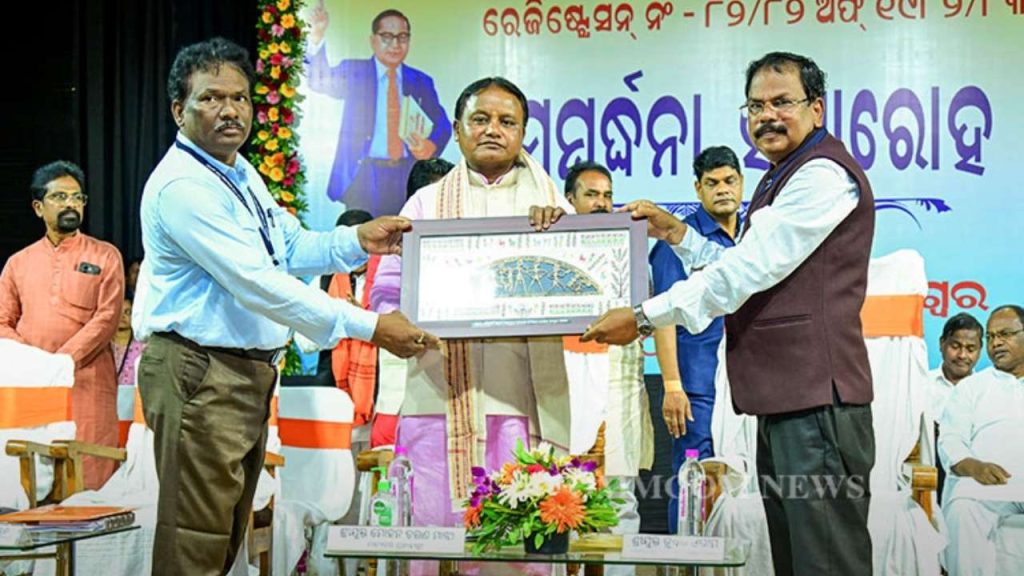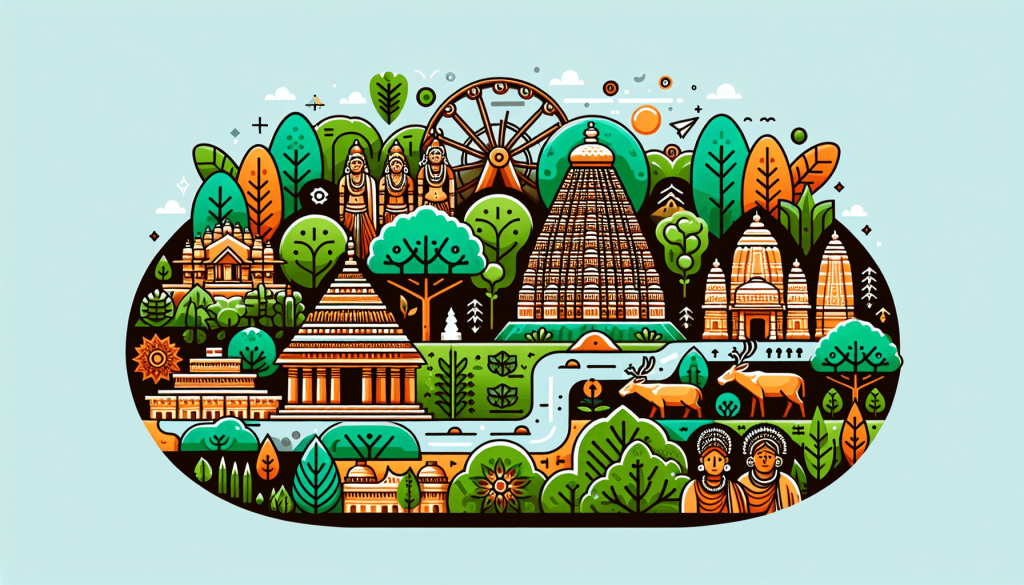The Chief Minister of Odisha, Mohan Charan Majhi, is putting a strong emphasis on the rapid development of tribal areas in the state, ensuring that the needs and well-being of tribal communities are at the heart of the government’s agenda. In his recent speeches and official statements, CM Majhi emphasized that no true progress can be made without uplifting the tribes, which represent a significant portion of the population.
Tribal areas in Odisha have long been among the most underdeveloped regions of the state, but with the newly focused efforts under CM Majhi’s leadership, the state is aiming to make significant strides in improving the quality of life for these communities. The Odisha government is stepping up its investments in infrastructure, education, healthcare, and livelihood programs to ensure that these areas experience growth in tandem with the rest of the state. But it’s not just about making these areas livable—it’s about giving tribal people the tools they need to thrive, contribute to the economy, and maintain their cultural heritage.

Let’s break down the details of CM Majhi’s plan to prioritize tribal areas, explain how these initiatives will impact the communities, and provide clear insights for those interested in understanding the broader implications of these efforts.
Odisha Government Prioritizes Swift Development of Tribal Areas
| Key Areas of Focus | Details |
|---|---|
| State’s Tribal Population | Odisha’s tribal population makes up nearly 40% of its total population, making them a critical focus for development. |
| Mukhyamantri Janajati Jivika Mission | This initiative has already impacted 1.45 lakh tribal families, offering support through agriculture, irrigation, and animal husbandry. |
| PM-Janman Yojana | Focuses on the Particularly Vulnerable Tribal Groups (PVTGs), targeting nearly 3 lakh people in 14 districts to reduce poverty and enhance job prospects. |
| Tribal Culture and Heritage Bhavan | A ₹100 crore initiative to preserve and promote tribal culture and heritage. |
| Educational Investments | Allocating ₹732.48 crore for tribal student hostels, as well as ₹100 crore for the Shaheed Laxman Nayak Model Ashram School scheme to improve education access. |
| Infrastructure Development | Aimed at improving roads, bridges, and general connectivity in tribal areas through schemes like Mukhya Mantri Sadak Yojana and Setu Bandhana Yojana. |
Read more about Odisha Government’s Tribal Development Plan
The Odisha government’s focus on the swift development of tribal areas under the leadership of CM Mohan Charan Majhi is a vital step toward ensuring that all communities in the state, regardless of their cultural or geographical background, have the chance to thrive. By focusing on livelihood, education, healthcare, cultural preservation, and infrastructure, Odisha is not just improving the lives of its tribal people but also paving the way for a brighter, more inclusive future. As these programs continue to roll out, they will serve as a model for other states and countries that seek to integrate marginalized communities into the mainstream of society.
Why Tribal Development Matters for Odisha
Tribal communities, particularly those in rural and remote parts of Odisha, often face systemic barriers to education, healthcare, and economic opportunity. These communities are not only key to the state’s demographic makeup but also play an essential role in Odisha’s cultural heritage. Yet, until now, many of these tribal areas have remained underdeveloped, with insufficient infrastructure and resources.
The development of these communities is not just a social necessity; it’s also an economic opportunity. With over 40% of Odisha’s population identified as tribal, focusing on their development will undoubtedly fuel the state’s overall progress. By improving living conditions, health, education, and economic opportunities for these communities, Odisha will create a more balanced, inclusive society, and lay the groundwork for sustainable growth.
Additionally, as CM Majhi has pointed out, development in these regions will help preserve and promote tribal cultures. Often marginalized in mainstream society, tribal people’s traditions, languages, and lifestyles form an integral part of Odisha’s cultural diversity. By fostering an environment that values these cultures, the state ensures that they are not only preserved but allowed to thrive in the modern world.

A Focus on Livelihood and Economic Empowerment
One of the standout initiatives under CM Majhi’s leadership is the Mukhyamantri Janajati Jivika Mission. This program has been specifically designed to support tribal families by improving their access to livelihood opportunities. The program has already benefitted over 1.45 lakh families, providing resources for farming, irrigation systems, and animal husbandry.
Through this mission, the government seeks to ensure that tribal communities can earn a sustainable living while also modernizing their farming and agricultural practices. Notably, this is also a step toward reducing dependence on traditional, often unreliable, methods of subsistence farming. Access to better irrigation and farming technologies means that tribal communities will be able to produce more food, improve their income, and contribute more significantly to the economy.
In the long run, such initiatives will not just lift individual families out of poverty but also bolster the state’s agricultural output, driving both local and regional economies. For example, tribal farmers will be able to scale up their production of key crops, which will feed into state markets and even broader national networks.
Focusing on the Most Vulnerable: PVTGs
Among the most vulnerable tribal groups are those categorized as Particularly Vulnerable Tribal Groups (PVTGs). The Odisha government has launched the PM-Janman Yojana to target these communities, numbering approximately 3 lakh people across 14 districts.
The initiative focuses on alleviating poverty, enhancing job prospects, and improving education within PVTG communities. By addressing these core areas, the government hopes to ensure that tribal people have a fair shot at economic stability and social inclusion.
Preserving Tribal Culture: The Role of Sabari Bhavan
Tribal culture is rich, diverse, and an irreplaceable part of Odisha’s identity. CM Majhi has made preserving and promoting tribal heritage a key part of the state’s development agenda. One of the boldest steps in this direction is the creation of the Tribal Culture and Heritage Bhavan, a ₹100 crore project that will serve as a cultural hub for tribal communities.
This facility will provide a platform for cultural exchange, research, and preservation of tribal art, music, and traditions. It’s a space where tribal people can showcase their unique cultural practices, educate the public about their history, and connect with people from different walks of life. This initiative will not only create pride among tribal communities but will also bring awareness and recognition of their cultural contributions to society.
Key Investments in Education
Education plays a pivotal role in any community’s development, and the tribal communities in Odisha are no exception. The state has committed ₹732.48 crore toward building and maintaining hostels for tribal students, enabling them to access education in more urbanized areas. These hostels will serve as safe spaces for students to live, study, and pursue their academic goals without the constant worry of accommodation or security.
Further, the Shaheed Laxman Nayak Model Ashram School Scheme, which has received an investment of ₹100 crore, is another critical initiative. These schools aim to provide tribal children with quality education that will help them break the cycle of poverty and create a more educated, skilled workforce.
By investing in education, Odisha is laying the foundation for future generations of tribal people to access professional careers, contribute to the economy, and improve their standard of living.
Infrastructure: Roads, Bridges, and Connectivity
The government’s approach to improving infrastructure in tribal areas focuses on ensuring that these communities have access to the same opportunities as other parts of the state. Roads, bridges, and transportation links are essential to ensuring that tribal people can access schools, hospitals, markets, and government services.
Initiatives like the Mukhya Mantri Sadak Yojana and Setu Bandhana Yojana are specifically designed to improve connectivity in remote areas. These programs focus on building and upgrading roads and bridges, thereby reducing isolation and making it easier for tribal communities to interact with broader society.
Improved infrastructure will also open up avenues for businesses to set up shop in tribal areas, thus creating more employment opportunities and boosting the local economy.
FAQs
1. How is the Odisha government supporting tribal families?
The Odisha government supports tribal families through various programs, such as the Mukhyamantri Janajati Jivika Mission, which focuses on agriculture, animal husbandry, and livelihood improvements.
2. What is the significance of the Tribal Culture and Heritage Bhavan?
The Tribal Culture and Heritage Bhavan is a ₹100 crore project aimed at preserving and promoting tribal culture. It serves as a cultural hub for showcasing tribal art, traditions, and history.
3. How will education initiatives impact tribal students?
The Odisha government has allocated substantial funds for tribal student hostels and schools. These initiatives aim to provide tribal children with better access to education, creating future opportunities for success.
4. What is the PM-Janman Yojana, and how does it benefit PVTGs?
The PM-Janman Yojana targets Particularly Vulnerable Tribal Groups (PVTGs) and aims to reduce poverty, enhance job prospects, and improve living conditions in remote districts.
5. Why is improving infrastructure in tribal areas so important?
Improved infrastructure such as roads and bridges connects tribal communities with essential services, schools, and markets, enhancing their quality of life and economic opportunities.






